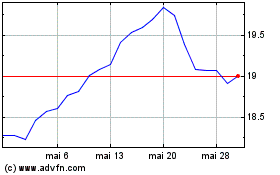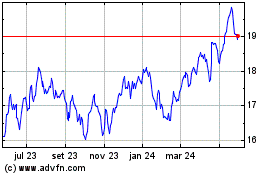_____________________________________________________________________________________________
UNITED STATES
SECURITIES AND EXCHANGE COMMISSION
Washington, DC 20549
____________________________________
FORM SD
____________________________________
SPECIALIZED DISCLOSURE REPORT
Kinder Morgan, Inc.
(Exact name of registrant as specified in its charter)
_____________________________________________________________________________________________
| | | | | | | | |
Delaware | 001-35081 | 80-0682103 |
(State or other jurisdiction of incorporation or organization) | Commission File Number | (I.R.S. Employer Identification No.) |
1001 Louisiana Street, Suite 1000, Houston, Texas 77002
(Address of principal executive offices)
Catherine James
(713) 369-9000
(Name and telephone number, including area code, of the person to contact in connection with this report.)
_____________________________________________________________________________________________
Check the appropriate box to indicate the rule pursuant to which this form is being filed, and provide the period to which the information in this form applies:
| | | | | |
☒ | Rule 13p-1 under the Securities Exchange Act (17 CFR 240.13p-1) for the reporting period from January 1 to December 31, 2023. |
Item 1.01 CONFLICT MINERALS DISCLOSURE AND REPORT
A copy of the attached Conflict Minerals Report in accordance with Rule 12b-12 (17 CFR 240.12b-12) may be found on our website at:
http://conflictmineralsinfo.kindermorgan.com
Item 2.01 EXHIBITS
SIGNATURE
Pursuant to the requirements of Section 13 or 15(d) of the Securities Exchange Act of 1934, the Registrant has duly caused this report to be signed on its behalf by the undersigned, thereunto duly authorized.
| | | | | | | | | | | | | | |
| | | | KINDER MORGAN, INC. |
| | | | Registrant |
| | | | | | | | | | | | | | | | | | | | |
| Dated: May 17, 2024 | | | | By: | | /s/ David P. Michels |
| | | | | | David P. Michels
Vice President and Chief Financial Officer |
Exhibit 1.01
2023 Kinder Morgan Conflict Minerals Report
Definitions
Unless the context otherwise requires, references to “we,” “us,” “our,” or “KMI” mean Kinder Morgan, Inc. and our consolidated subsidiaries.
| | | | | |
Conflict minerals: | Cassiterite, columbite-tantalite (coltan), gold, wolframite or their derivatives, which are limited to tantalum, tin, and tungsten |
| |
Conflict minerals rules: | The final conflict minerals reporting rules adopted by the SEC in accordance with Section 1502 of the Dodd-Frank Wall Street Reform and Consumer Protection Act of 2010 |
| |
DRC: | The Democratic Republic of Congo and adjoining countries |
| |
OECD: | Organization for Economic Cooperation and Development |
| |
RMI: | The Responsible Minerals Initiative (previously The Electronic Industry Citizenship Coalition (EICC) and Global e-Sustainability Initiative (GeSI) Conflict-Free Sourcing Initiative) |
| |
SOR: | Smelters or refiners in whose facilities conflict minerals are processed |
|
|
RCOI: | Reasonable country of origin inquiry to determine whether we have reason to believe that conflict minerals originated from the DRC |
| |
| Bcf: | Billion cubic feet |
Businesses Potentially Subject to the Conflict Minerals Rules
We are one of the largest energy infrastructure companies in North America. As of December 31, 2023, we owned an interest in or operated approximately 82,000 miles of pipelines, 139 terminals, 702 Bcf of working natural gas storage capacity and had renewable natural gas generation capacity of approximately 6.1 Bcf per year of gross production. Our pipelines transport natural gas, refined petroleum products, crude oil, condensate, CO2, renewable fuels and other products, and our terminals store and handle various commodities including gasoline, diesel fuel, jet fuel, chemicals, metals, petroleum coke and ethanol and other renewable fuels.
Approximately 0.1% of our revenue for 2023 was generated by manufacturing operations. We had one consolidated subsidiary that manufactured or contracted to manufacture products for sale to customers during the year. Although this subsidiary’s revenues are inconsequential to our business, any amount of manufacturing revenues means we must comply with applicable conflict minerals rules.
Applying the Conflict Minerals Rules to Us
The SEC’s conflict minerals rules require a three-step compliance approach. The first step is determining applicability of the conflict minerals rules to us by identifying any conflict minerals necessary to the production of our manufactured products; the second step is a RCOI to determine whether we have reason to believe that conflict minerals present in our manufactured products originated from the DRC; and the third step (referred to as “due diligence” in the rules) is to determine the source and origin of any such conflict minerals and the facilities in which they were processed.
As a downstream company in the conflict minerals supply chain, we are several tiers removed from mining operations and SORs and have no visibility into the upstream supply chain beyond our direct suppliers. The purpose of this report is to explain the steps that we have performed to comply with the conflict minerals rules. Our first step has consisted of making inquiries with our vendors to determine whether conflict minerals are present within the products that they sell to us. Since conflict minerals are likely to be necessary for the functionality of electronic components that we purchase from our suppliers as subcomponents to our manufactured products, we simultaneously performed the second compliance step, the RCOI, whereby we inquired about the origins of any conflict minerals present in our supply chain.
Those vendors who confirmed the presence of conflict minerals originating from the DRC in the subcomponents that they sell to us have stated that their due diligence to identify the sources within the DRC of those conflict minerals is ongoing, but they have not yet received complete information. We will continue communicating with our vendors to perform the third compliance step, which is due diligence to identify the sources of those conflict minerals and the SORs in which they were processed.
Due Diligence Framework and Resources
We conducted due diligence with respect to our manufacturing operations using the OECD Due Diligence Guidance for Responsible Supply Chains of Minerals from Conflict-Affected and High Risk Areas as a framework. In addition, we used the RMI conflict minerals reporting template (originally developed by EICC-GeSI), which includes standard supply chain survey and information tracking methods to (i) determine if our manufactured products contain conflict minerals necessary to their functionality or production, (ii) perform a RCOI and (iii) assess whether our supply chain adheres to due diligence measures put forward by the OECD.
Due Diligence Steps Performed
•Identified our businesses that manufactured or contracted to manufacture products in 2023;
•Determined that 25 of our manufactured products could contain conflict minerals;
•Further identified a total of 1,446 components of our 25 products that could contain conflict minerals, and 15 vendors from whom we purchased these components;
•Notified the above vendors to remind them that we are subject to conflict minerals rules and that we would be conducting due diligence regarding the presence, source, and chain of custody for any conflict mineral present in components we purchased from them, and to provide a copy of our conflict minerals policy;
•Using a standardized conflict minerals reporting template developed by RMI, made our initial inquiries with those 15 vendors;
•Compiled, reviewed and analyzed 15 vendor responses; and
•Conducted multiple follow-up requests with zero unresponsive vendors.
The vendors who responded to our survey reported that: (i) conflict minerals were not present in the subcomponents that they supply to us in the case of 6 vendors; (ii) that subcomponents that they supplied to us did contain conflict minerals from the DRC, but their due diligence processes to identify sources and SORs are still in progress and cannot be fully reported to us in the case of 4 vendors; or (iii) they are not subject to the conflict minerals rules and do not have policies that address conflict minerals sourcing in the case of 5 vendors.
Mitigation
Since 2014 and our implementation of a Conflict Minerals policy, we have completed the following steps to mitigate the risk that our products may contain conflict materials that benefit armed groups within the DRC, including steps to improve our due diligence:
•Developed and adopted a conflict minerals policy applicable to our manufacturing operations, which communicates that we expect our manufacturing vendors to cooperate with our due diligence efforts and work toward increased supply chain transparency and responsible sourcing of conflict minerals;
•Disseminated our conflict minerals policy to those vendors who provide raw materials and components for our manufacturing operations;
•Created a process within our manufacturing operations procurement function to notify new vendors of our conflict minerals policy;
•Revised our manufacturing operations purchase orders to include our conflict minerals policy and notification of our annual conflict minerals survey process;
•Continued to publish a copy of our annual Conflict Minerals Report and Policy on our website at:
http://conflictmineralsinfo.kindermorgan.com; and
•Continued to communicate with suppliers regarding our conflict minerals reporting obligations and need for their assistance in conducting supply chain due diligence on source and chain of custody for raw materials and components purchased for our manufacturing operations.
Kinder Morgan (NYSE:KMI)
Gráfico Histórico do Ativo
De Dez 2024 até Jan 2025

Kinder Morgan (NYSE:KMI)
Gráfico Histórico do Ativo
De Jan 2024 até Jan 2025
